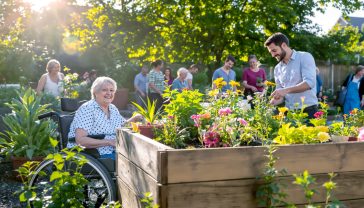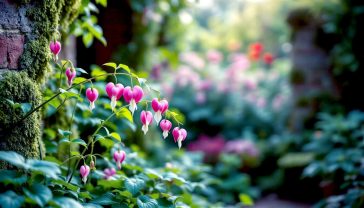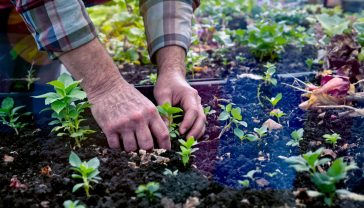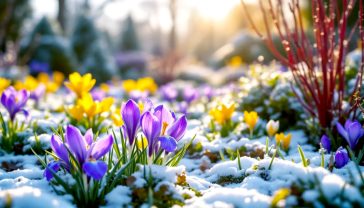The Great British Patch: Your Guide to Holistic Horticulture and Organic Principles
Your complete guide to holistic horticulture in the UK. Learn to create a thriving, organic garden that works with nature, not against it.
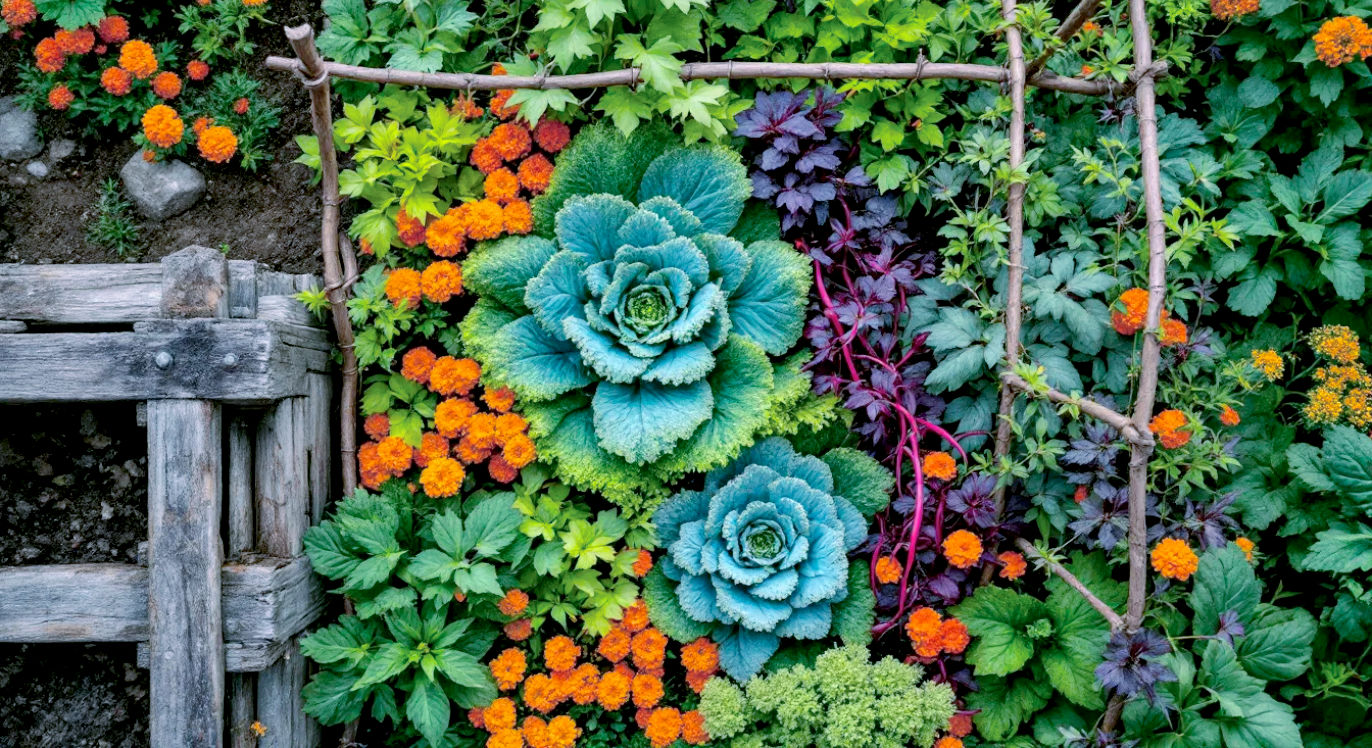
This post may contain affiliate links. If you make a purchase through these links, we may earn a commission at no additional cost to you.
Gardening. It’s practically in our British DNA, isn’t it? Whether it’s a sprawling country garden, a neat suburban lawn, a bustling allotment, or just a few pots on a balcony, we love to get our hands dirty. We find a unique sort of peace in nurturing something from a tiny seed into a flourishing plant. But what if your garden could do more than just look pretty or give you a few tomatoes for your salad? What if it could be a complete, living system that works with nature, not against it?
Welcome to the world of holistic horticulture. It’s a bit of a mouthful, but the idea is simple: think of your garden as a whole community. It’s not just about the plants you choose; it’s about the soil they live in, the insects that visit, the water you use, and even your own well-being. It’s about creating a balanced, self-sustaining little ecosystem right outside your back door.
This isn’t some trendy new fad. It’s a way of gardening rooted in common sense and age-old wisdom, supercharged with a modern understanding of science. It’s about ditching the chemical sprays and artificial fertilisers and embracing organic principles to create a garden that is healthier, more resilient, and buzzing with life.
In this guide, we’re going to dig deep into what holistic horticulture really means. We’ll explore how to build incredible soil (the secret to all great gardens!), how to manage pests without nasty chemicals, and how to create a space that’s as good for the planet as it is for your soul. So, grab your trowel and a cuppa, and let’s get started on building a garden that truly thrives.
What on Earth is Holistic Horticulture? The Core Ideas Explained
At its heart, holistic horticulture is a philosophy. It sees the garden not as a collection of individual plants to be controlled, but as a single, interconnected organism. Every part affects every other part. The health of your soil determines the health of your roses, which in turn provides food for bees, which then pollinate your apple tree. It’s all one big, beautiful cycle.
Think of it like this: a conventional gardener might see a patch of aphids on a rose and immediately reach for a chemical spray. A holistic gardener asks, “Why are the aphids here?” Is the rose stressed? Is the soil lacking nutrients? Are there no ladybirds around to eat the aphids? The goal isn’t just to kill the pest; it’s to fix the underlying problem and make the whole garden stronger so pests aren’t an issue in the first place.
This approach is built on a few key organic principles that work together.
Principle 1: The Soil is Everything
If you remember one thing, make it this: healthy soil equals healthy plants. In holistic gardening, the soil isn’t just dirt that holds plants up. It’s a teeming, underground city, bustling with billions of microscopic life forms—bacteria, fungi, worms, and countless other tiny creatures. This is often called the soil food web.
- Simplified Explanation: Imagine the soil is like a city’s delivery service. Microbes break down organic matter (like old leaves and compost) into tiny nutrients. Worms create tunnels that let air and water in. A special type of fungi, called mycorrhizal fungi, forms a partnership with plant roots, acting like a massive extension cord to fetch water and nutrients from far away in exchange for some sugars from the plant. It’s the ultimate teamwork.
- Detailed Explanation: This complex ecosystem is vital. The bacteria and fungi mineralise nutrients, converting them from forms plants can’t use into forms they can absorb. Earthworms and other organisms improve soil structure, creating a crumbly, well-aerated texture known as ‘good tilth’. This structure allows roots to grow easily and prevents the soil from becoming waterlogged or compacted. Building and feeding this soil food web is the primary job of a holistic gardener. Forget feeding the plant; feed the soil, and the soil will feed the plant.
Principle 2: Working With Nature, Not Against It
A holistic garden embraces biodiversity. Instead of neat rows of a single crop (a monoculture), which is like rolling out a welcome mat for pests and diseases, this approach encourages a rich mix of different plants.
This means:
- Encouraging Wildlife: Planting flowers that attract pollinators like bees and hoverflies isn’t just nice; it’s essential for fruit and vegetable production. Leaving a small patch of nettles can provide a breeding ground for ladybirds (which eat aphids). A small log pile can become a 5-star hotel for pest-munching beetles and amphibians.
- Companion Planting: Some plants are great neighbours. For example, planting marigolds near tomatoes can deter whiteflies, while growing onions and carrots together can confuse the pests that target each of them. It’s about creating a plant community where members help each other out.
- Understanding Cycles: Nature works in cycles—the water cycle, the nutrient cycle, the seasons. A holistic gardener respects these rhythms. Water is collected and used wisely, perhaps with a water butt. Green waste from the kitchen and garden is composted and returned to the soil, completing the nutrient cycle.
Principle 3: No Nasty Chemicals, Thank You Very Much
This is a big one. Holistic horticulture is fundamentally organic. That means no synthetic pesticides, herbicides (weedkillers), or artificial fertilisers.
- Why Avoid Chemicals? Pesticides don’t just kill the ‘bad’ bugs; they kill beneficial insects like bees and ladybirds too, upsetting the garden’s natural balance. Herbicides can harm soil life and can persist in the environment. Artificial fertilisers give plants a quick, sugary hit of growth, but they do nothing to build long-term soil health. In fact, they can damage the delicate soil food web.
- What’s the Alternative? Instead of chemical warfare, the focus is on prevention and natural solutions. Healthy, well-fed plants are naturally more resistant to pests and diseases. If problems do arise, the solutions are gentle. A blast of soapy water can dislodge aphids. Physical barriers like netting can protect cabbages from butterflies. And encouraging natural predators is the best long-term solution of all.
A Potted History: How We Got Back to Our Roots
This way of thinking might seem modern, but it’s actually a return to older, wiser traditions, with deep roots right here in Britain.
For centuries, gardeners and farmers understood the importance of working with the land. They rotated crops, used animal manures, and understood the seasons. But the 20th century brought what was called the ‘Green Revolution’. With it came powerful new chemical fertilisers and pesticides. They promised huge yields and perfect, pest-free crops. For a while, it seemed like magic.
But soon, the downsides became clear. Soil quality declined, wildlife vanished, and our food systems became dependent on chemicals.
A few forward-thinking pioneers started to question this approach. One of the most important was Sir Albert Howard, a British botanist often called the father of modern organic agriculture. Working in India in the early 1900s, he observed that the healthiest, most disease-resistant crops were grown using traditional methods that focused on composting and soil health. He saw that nature itself was the best farmer.
His ideas inspired a new generation. In 1946, a group of farmers, scientists, and gardeners formed the Soil Association in the UK. They were worried about the connection between soil health, plant health, animal health, and human health. They championed the idea of looking at the whole picture—a truly holistic view.
Another key figure was Lawrence Hills, who founded the Henry Doubleday Research Association (now known as Garden Organic) in 1954. He was passionate about ‘comfrey’, a plant he believed could help gardeners become self-sufficient, and he dedicated his life to researching and promoting organic gardening techniques for ordinary people.
These organisations, born out of a concern for the health of our soil and ourselves, laid the groundwork for the holistic and organic movement we see today. They proved that you could grow fantastic food and beautiful gardens without sacrificing the health of the environment.
Getting Your Hands Dirty: The Practical Guide to a Holistic Garden
Right, enough theory. How do you actually do it? Creating a holistic garden is a journey, not a weekend project. The key is to start small and build from the ground up—literally.
Step 1: Become a Soil Superstar
Building amazing soil is your number one priority. The goal is to create a dark, crumbly, sweet-smelling soil that’s packed with organic matter.
- Compost is King: Your most powerful tool is a compost bin. Don’t throw away your kitchen scraps (veg peelings, coffee grounds, eggshells) or your garden waste (grass clippings, old leaves, pruned stems). Compost them! Composting is the process of letting microorganisms break down this waste into a nutrient-rich, soil-like material called humus. Adding compost to your soil is the single best thing you can do for it. It feeds the soil food web, improves structure, and helps retain moisture.
- Hot Tip for Brits: Our damp climate is brilliant for composting, but bins can get a bit soggy. Make sure you have a good mix of ‘greens’ (wet stuff like grass clippings and veg peelings) and ‘browns’ (dry stuff like cardboard, woody stems, and autumn leaves) to keep it balanced. A 50/50 mix is a good rule of thumb.
- The Magic of Mulching: Mulching is simply covering the surface of your soil with a layer of organic material. This could be your homemade compost, well-rotted manure, leaf mould, or even just a thick layer of cardboard. Mulching does several amazing things:
- It protects the soil from being baked by the sun or battered by rain.
- It suppresses weeds.
- It slowly breaks down, feeding the worms and microbes below.
- It helps the soil hold onto moisture, meaning you have to water less.
- Go ‘No-Dig’: This is a game-changer. For decades, we were told to dig our gardens every winter to break up the soil. But we now know that digging can seriously damage the delicate soil structure and the fungal networks within it. No-dig gardening, popularised in the UK by the brilliant Charles Dowding, is a simpler, better way. You simply leave the soil undisturbed and add a thick layer of compost on top each year. The worms will do the digging for you, pulling the organic matter down into the soil. It means less work, fewer weeds, and healthier soil.
Step 2: Create a Buzz – Inviting Wildlife In
Your garden needs wildlife. The birds, bees, beetles, and frogs are your personal pest control and pollination squad. You just need to send them an invitation.
- Plant a Pollinator Buffet: Bees and other pollinators need food throughout the year. Plant a variety of flowers with different shapes and sizes that bloom from early spring to late autumn.
- Early Spring: Crocuses, snowdrops, pulmonaria.
- Summer: Lavender, geraniums, foxgloves, borage, alliums, scabious.
- Autumn: Sedum (now Hylotelephium), asters, rudbeckia.
- Top Tip: Simple, open-faced flowers are often better than fancy double varieties, as pollinators can access the nectar and pollen more easily.
- Provide Homes and Water:
- A bug hotel can provide shelter for lacewings and solitary bees.
- A log pile in a shady corner is a haven for beetles, centipedes, and maybe even a toad or hedgehog.
- Let a small patch of grass grow long to create a mini-meadow.
- A shallow dish of water with some pebbles in it will give bees and birds a safe place to drink. A small pond, even one made from an old sink, is one of the best things you can add for biodiversity.
- Embrace the “Pest” Predators: Before you squish that bug, identify it! Many insects are your allies. Ladybirds and their larvae devour aphids. Hoverfly larvae are also voracious aphid-eaters. Ground beetles hunt slugs at night. By creating a welcoming habitat, you encourage these predators to make your garden their home.
Step 3: Smarter Planting for a Healthier Garden
How and what you plant can make a huge difference to the health of your garden.
- Right Plant, Right Place: This is a classic gardening rule, and it’s crucial. Don’t try to grow a sun-loving lavender plant in a shady, damp spot. It will struggle, become stressed, and be more vulnerable to pests and diseases. Choose plants that will naturally thrive in the conditions you have.
- Mix It Up (Polyculture): Avoid planting large blocks of the same thing. Mix vegetables, herbs, and flowers together. This confuses pests that are looking for their favourite meal. Planting strong-smelling herbs like rosemary, mint, or sage among your vegetables can help mask their scent from pests.
- Crop Rotation: If you’re growing vegetables, try not to plant the same family of crops in the same spot year after year. For example, follow potatoes with beans, then cabbages, then roots like carrots. This prevents the build-up of specific soil-borne pests and diseases and helps manage soil nutrients.
Step 4: Water Wisely
In our notoriously unpredictable British weather, watering can be tricky. But a holistic approach can make your garden more resilient to both drought and downpours.
- Install a Water Butt (or three!): Rainwater is free and it’s better for your plants than tap water. Collect the rainwater that runs off your roof, shed, or greenhouse.
- Water Deeply, Less Often: When you do water, give the soil a really good soak. This encourages plants to send their roots down deep into the soil, where they are more protected from drying out. A light, daily sprinkle just encourages shallow rooting.
- Water the Soil, Not the Leaves: Watering the leaves, especially in the evening, can encourage fungal diseases like mildew. Direct water to the base of the plant where it’s needed.
Tackling Common Problems the Holistic Way
Even in the most balanced garden, problems can pop up. Here’s how to deal with the most common British garden villains without resorting to chemicals.
- The Slug and Snail Onslaught: The bane of many a British gardener’s life! A multi-pronged attack is best.
- Encourage Predators: Thrushes, frogs, toads, and ground beetles all eat slugs. A pond and a log pile will help bring them in.
- Barriers: Crushed eggshells or wool pellets can create a scratchy barrier around precious plants. Copper tape around pots can give slugs a small electric shock.
- Go on a Night Hunt: Head out with a torch on a damp evening. You’ll be amazed how many you can collect (and relocate to your compost heap).
- Nematodes: For a serious infestation, you can buy microscopic nematodes online. You water them into the soil, and they seek out and kill slugs. It’s a form of biological control.
- Aphids (Greenfly/Blackfly): These tiny sap-suckers often appear on new, soft growth.
- Squish or Spray: For small outbreaks, you can simply squish them with your fingers or knock them off with a jet of water from a hose or spray bottle. A very dilute solution of washing-up liquid can also work (but test on a small area first).
- Attract the Good Guys: This is the best long-term plan. Plant things that attract ladybirds, hoverflies, and lacewings. Let them do the work for you.
- Powdery Mildew: This white, dusty coating often appears on plants like courgettes, roses, and phlox, especially in dry weather with humid nights.
- Improve Airflow: Don’t overcrowd your plants. Prune them to allow air to circulate freely.
- Water Consistently: Water the soil regularly during dry spells to avoid stressing the plant.
- Remove Affected Leaves: Snip off and dispose of (don’t compost) any badly affected leaves to stop the spores from spreading.
The Holistic Harvest: More Than Just Food
One of the greatest joys of this kind of gardening is the harvest. The food you grow will be packed with flavour and nutrients in a way that shop-bought produce rarely is. A tomato warmed by the sun and picked straight from the vine is one of life’s simple, perfect pleasures.
But the harvest is more than just fruit and veg. It’s the satisfaction of knowing you created a thriving ecosystem. It’s the joy of watching a bee visit a flower you planted. It’s the fresh air and gentle exercise. Gardening is proven to be fantastic for our mental and physical well-being. It reduces stress, connects us with nature, and gives us a sense of purpose and achievement.
A holistic garden gives back. It provides a sanctuary for wildlife in a world where their habitats are shrinking. It improves the soil, captures carbon, and reduces your carbon footprint. By tending your small patch of the planet with care and respect, you are making a genuine, positive difference.
So, whether you’re a seasoned gardener or a complete beginner, why not give it a go? Start with one thing. Make a compost bin. Plant some lavender for the bees. Stop digging one of your beds. You’ll be taking the first step on a rewarding journey—one that leads to a healthier garden, a healthier you, and a healthier planet. Your great British patch is waiting.
Further Reading
For those looking to dig even deeper, these highly respected British organisations are fantastic resources:
- Garden Organic: The UK’s national charity for organic growing. Their website is a treasure trove of practical advice, fact sheets, and research.
- The Royal Horticultural Society (RHS): While not exclusively organic, the RHS provides a wealth of scientifically-backed gardening advice, including excellent guides on sustainable and wildlife-friendly practices.
- The Soil Association: The UK’s leading organic certification body. Their website offers deep insights into the principles behind organic food and farming.
- Charles Dowding’s No Dig Gardening: Charles is the UK’s foremost expert on the no-dig method, and his website and YouTube channel are essential resources for anyone wanting to try this soil-friendly approach.

